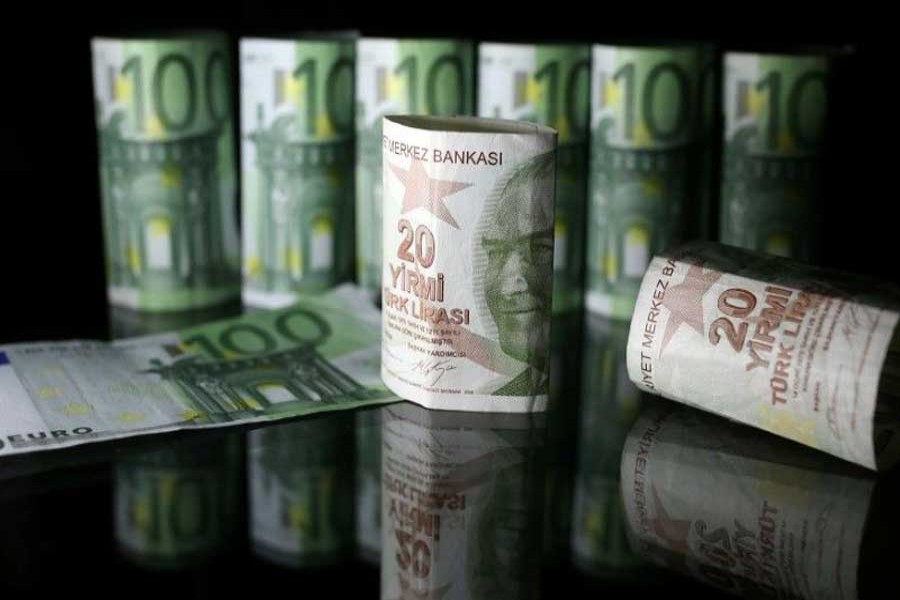The euro stood near a one-year low against the dollar and the Swiss franc on Tuesday, remaining under pressure as the Turkish lira wobbled on worries that Turkey’s economic woes could hit European banks and spread to other emerging economies.
Investors are nervous the plunge in the lira could prompt capital outflows from other emerging economies that run a hefty current account deficit and rely on foreign capital.
The euro traded little changed at $1.1410 EUR=, having fallen to a 13-month low of $1.1365 on Monday. So far this month it has lost 2.4 per cent.
Investors have rushed to the safe haven Swiss franc, which hit a one-year high of 1.1288 franc per euro EURCHF= on Monday and last stood at 1.1337.
The Turkish lira slipped as much as 0.6 per cent in early Asian trade on Tuesday to 6.955 per dollar TRYTOM=D2, though it hovered above a record low of 7.24 hit on Monday after the central bank pledged to provide liquidity.
The currency last stood at 6.9349.
The lira has fallen almost 30 per cent so far this month on concerns about President Tayyip Erdogan’s reluctance to raise interest rates despite rising inflation and a deepening diplomatic rift with the United States.
“The Turkish lira remains volatile and it is too early to say the lira has settled down. For now, currencies will be driven by the Turkish lira,” said Yukio Ishizuki, senior strategist at Daiwa Securities.
“But the euro’s fall on worries about European banks’ exposure to Turkey seems a bit over done, considering that their scale is not that huge,” he added.
Onshore Chinese yuan CNY=CFXS, which had retreated roughly 0.7 per cent the previous day, falling along with its emerging market peers, was a shade firmer at 6.8851 per dollar.
The yuan’s bounce was limited following the release of downbeat economic indicators, and it remained in reach of a 15-month trough of 6.8965 set earlier this month.
China’s economy is showing further signs of cooling as the US prepares to impose even tougher trade tariffs, with investment in the first seven months of the year slowing to a record low and retail sales softening, data released on Tuesday showed.
The yen, often perceived to be a safe haven because of Japan's net creditor status, edged back against the dollar along with a slight ebb in risk aversion, with the Nikkei .N225 bouncing more than 1 per cent after two days of steep losses on Turkish jitters.
The dollar was 0.05 per cent higher at 110.79 yen JPY=, off a 1-1/2-month low of 110.10 touched on Monday.
The greenback was also helped against the yen by rises in U.S. bond yields. The 10-year U.S. Treasuries yield US10YT=RR bounced back to 2.877 per cent from a three-week low of 2.848 per cent.
“The initial reaction emerging economies usually take in a currency crisis is to dip into their foreign reserves. That means they sell U.S. Treasuries, boosting their yields, which helps to lift the dollar against the yen,” said Makoto Noji, chief currency strategist at SMBC Nikko Securities.
Already on Monday, Indonesia’s central bank intervened to defend the rupiah while India’s central bank was seen intervening after the rupee hit a record low, Reuters reported.
The South African rand ZAR=D2 also fell more than 10 per cent at one point on Monday to hit a two-year low of 15.70 to the dollar, although it later pared much of losses. It last stood at 14.31.
Argentina’s currency fell 2.4 per cent to close at a record low 29.97 per dollar on Monday, as a local corruption scandal added to its woes, prompting the country’s central bank to hike interest rates by 5 per centage points to 45 per cent.


